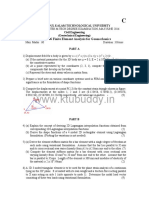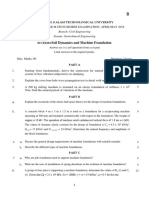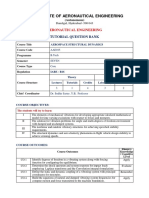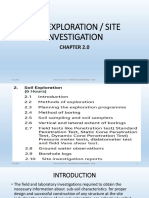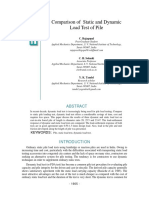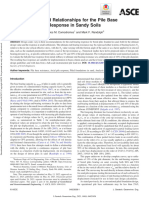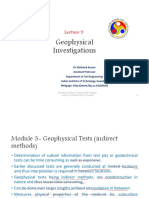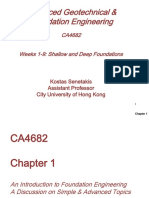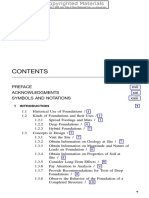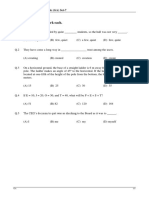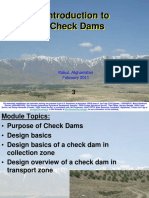0% found this document useful (0 votes)
250 views9 pagesFoundation Engineering: Kousik Deb
This document outlines the lecture plan for a foundation engineering course. Over 12 weeks, topics such as soil exploration methods, shallow and deep foundation design, lateral earth pressures, retaining structures, and underground conduits will be covered. Key reference materials are also listed. The design of foundations requires understanding the load on the foundation, building code requirements, soil behavior, and geological conditions to support the foundation system. Properties like grain size distribution, weight-volume relationships, and unit weights are important for characterizing geotechnical properties of soils.
Uploaded by
InduSaran AttadaCopyright
© © All Rights Reserved
We take content rights seriously. If you suspect this is your content, claim it here.
Available Formats
Download as PDF, TXT or read online on Scribd
0% found this document useful (0 votes)
250 views9 pagesFoundation Engineering: Kousik Deb
This document outlines the lecture plan for a foundation engineering course. Over 12 weeks, topics such as soil exploration methods, shallow and deep foundation design, lateral earth pressures, retaining structures, and underground conduits will be covered. Key reference materials are also listed. The design of foundations requires understanding the load on the foundation, building code requirements, soil behavior, and geological conditions to support the foundation system. Properties like grain size distribution, weight-volume relationships, and unit weights are important for characterizing geotechnical properties of soils.
Uploaded by
InduSaran AttadaCopyright
© © All Rights Reserved
We take content rights seriously. If you suspect this is your content, claim it here.
Available Formats
Download as PDF, TXT or read online on Scribd
/ 9



